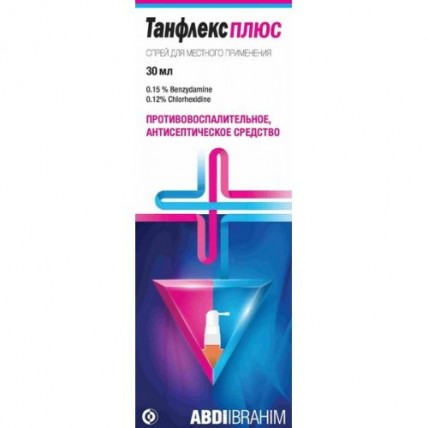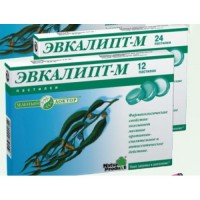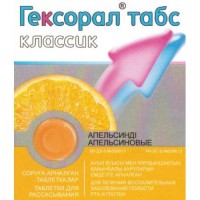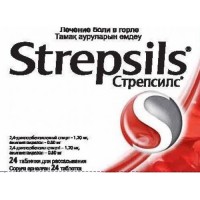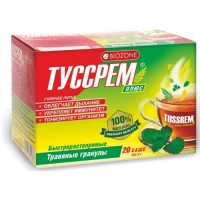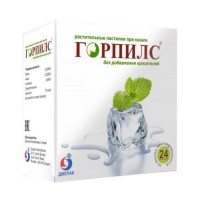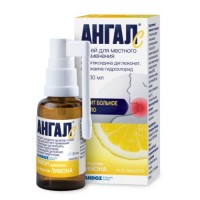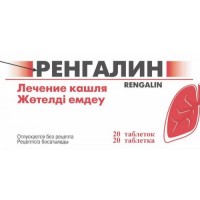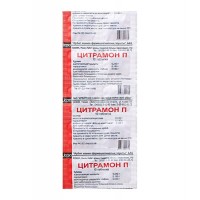The instruction for medical use of medicine of TANFLEX PLUS Torgovoye nazvaniye Tanflex Plus the International unlicensed name Is not present the Dosage form Spray for topical administration Structure 1 bottle (30 ml) contains active agent: benzydamine a hydrochloride - 45 mg, a chlorhexidina of a digluconate solution * - 180 mg excipients: glycerin, sodium saccharin, ethanol of 96%, peppermint oil, polysorbate 20, Natrii hydrocarbonas or acid chlorohydrogen, the water purified. *-0.036 180.00 mg of a chlorhexidin of a digluconate solution are equivalent to of a chlorhexidin of a gluconate. The description Colourless, transparent liquid with a mint smell. Pharmacological group Digestive tract and metabolism. Dental drugs. Other drugs for treatment of diseases of an oral cavity the ATX A01AD Code the Pharmacological Pharmacokinetics Absorption Later properties of topical administration of benzydamine of a hydrochloride, benzydamine is soaked up from the inflamed mucous and makes the anti-inflammatory and local anesthetizing impact in the place of processing. Distribution of Tanflex Plus is medicine of local action. Thus, it cannot be swallowed when it is used according to the description. Therefore system absorption and distribution is not expected. Besides, absorption of both components from mucous by a GIT is low. About 30% of the entered chlorhexidin of a gluconate remain in an oral cavity and leaves with saliva within 24 hours. Biotransformation Because of the minimum absorption of a chlorhexidin it cannot be measured in plasma. In general, benzydamine is metabolized by oxidation and conjugation in a liver. Removal Chlorhexidin does not collect in an organism and only a small amount is metabolized. About 10% of the swallowed chlorhexidin are excreted by kidneys after absorption and the remained unabsorbed 90% of drug are excreted with excrements. Benzydamine and metabolites which get to a system blood stream are generally excreted with urine. The pharmacodynamics Benzydamine is an anti-inflammatory soothing agent who structurally does not treat steroids. Benzydamine differs from other nonsteroid anti-inflammatory agents because of its basic structure. In the concentration used for topical treatment, benzydamine makes the local anesthetizing impact. Soothing effect of benzydamine was registered at experimental models of inflammation in comparison with pain of noninflammatory character more often. The anti-inflammatory mechanism of effect of benzydamine is not connected with channels of secretion of adrenal glands. As well as other nonsteroid anti-inflammatory agents, benzydamine inhibits biosynthesis of prostaglandins in certain conditions. This property, however, is definitely not studied. It can depend on the stabilizing action mechanism on cellular membranes. Chlorhexidin is a biguanide of antiseptics which helps to reduce development of a dental plaque and an ulitis at interruption of the general hygiene of an oral cavity. It has affinity with the hydroxyapatite enamel, the surface of tooth and tissues of an oral cavity containing bacteria and salivary proteins. Chlorhexidin reduces sedimentation of a dental plaque and the inflammation of gums connected with it which is characterized by reddening, hypostasis and bleeding from a gum. He reduces the frequency of forming of an aphthous ulcer and increases extent of healing after parodontologichesky surgery. After usual local use of drug, chlorhexidin renders bactericidal effect after long bacteriostatic action. Chlorhexidin is effective against the majority of microorganisms, such as gram (+) and gram(s) of a bacterium, a mold and some fungi and viruses. Thanks to the delayed impact on a surface, chlorhexidin slows down growth of bacteria. It is soaked up from a wall of cells of microbes and causes course of a membrane. Indications - treatment of an ulitis, stomatitis, pharyngitis, tonsillitis and aphthous wounds - inflammation and pains of a mucous mouth and a throat - disinfecting of an oral cavity and a throat, for simplification to the patient of swallowing and symptoms in diseases of gums - before parodontalny interventions - treatment of the mucositis caused by radiotheraphy, chemotherapy or other origin - prevention of a dental plaque the Route of administration and doses of Tanflex Plus is used without dilution. Tanflex Plus should not be swallowed and spat out after use. Adults the Usual dose of spray of Tanflex Plus for direct processing of a throat / the inflamed area makes 4-8 operations each 1.5 - 3 hours during the day. Chlorhexidin as a part of drug of Tanflex Plus in the course of treatment of an ulitis promotes formation of a dental plaque. Before use it is necessary to clean previously teeth a toothbrush. If spray of Tanflex Plus is used as an alternative to procedures of hygiene of an oral cavity, then it is necessary to rinse a mouth not less than 1 minute. To reduce formation of the spots caused Tanflex Plus, chlorhexidiny as a part of spray, it is necessary to clean previously teeth a toothbrush. Children children are not recommended to use 12 years are younger. The usual dose of spray of Tanflex Plus to children is more senior than 12 years for direct processing of a throat / the inflamed area makes 4 operations each 1.5 - 3 hours during the day. Patients of advanced age. To elderly patients the same doses as well as are applied to adults. Patients with a renal and liver failure to Apply with care at patients with heavy renal dysfunction or heavy hepatic dysfunction. If the sore throat is caused by a bacterial infection or connected with a bacterial infection, it is possible to consider additional treatment besides Tanflex Plus Side effects the Registered undesirable effects are listed below according to the following frequency of emergence. Very often (≥1/10), it is frequent (& gt, 1/100, & lt, 1/10), infrequently (& gt, 1/1.000, & lt, 1/100), is rare (& gt, 1/10.000, & lt, 1/1.000), is very rare (& lt, 1/10.000), it is unknown (it is impossible to define from the available data). Disorders of the immune system Very seldom: Allergic reactions, hypersensitivity and anaphylaxis of Disorder of an endocrine system Very seldom: Temporary tumor of a parotid gland of Disorder of nervous system Very often: Temporary decrease in flavoring feelings Is frequent: Pricking and burning in a mouth Is unknown: Dizziness, headache, drowsiness of the Respiratory disease, thorax and mediastinum: Very seldom: A laryngospasm, a bronchospasm It is unknown: Cough, irritation of a throat Gastrointestinal disorders Often: Nausea, vomiting, desires on vomiting, gastrointestinal diseases of Disorder of skin and hypodermic fabric It is very rare: Skin reactions because of irritation, an itching, rash, urticaria, a light dermatosis, oral desquamation the General disorders and a state on the site of use: Often: Changes of taste and discoloration of teeth, the increased formation of a dental calculus It is rare: Burning sensations and prickings It is very rare: Local dryness, dryness, pricking, a cool in the Contraindication mouth - hypersensitivity to benzydamine, a chlorhexidin or any other ingredients of structure - children's age up to 12 years - during pregnancy and the period of breastfeeding Medicinal interactions Chlorhexidin is incompatible with anion additives in usual toothpastes. Therefore it is necessary to use Tanflex Plus before toothbrushing by paste. Salts of a chlorhexidin are incompatible with soap and other anion connections. In spite of the fact that salts of a chlorhexidin are compatible to cationic and nonionic surfactants when they are used in high concentrations, the activity of a chlorhexidin can decrease because of binding of a micelle. The solubility of salts of a chlorhexidin can be increased by Surfactants, such as tsetrimid and lissapol NX. Salts of a chlorhexidin are incompatible with anion-active polyelectrolytes, such as arabic gum, sodium alginate, sodium carboxymethylcellulose, starch and tragacanth gum, their efficiency decreases at simultaneous use. They are also incompatible with brilliant green, chloramphenicol, copper sulfate, sodium fluorescein, formaldehyde, silver nitrate and zinc sulfate. At drug dilution by hard water, it can drop out in a deposit in the form of imperceptible salts as it interacts with Ca2 cations + and Mg2 +. If concentration of solutions of salts of a chlorhexidin with benzoate, bicarbonate, a carbonate, borate, nitrate, phosphate and sulfates exceeds 0.05%, there can be a sedimentation because of formation of less soluble salts. Chlorhexidina the gluconate is compatible with tsetrimidy and a benzalkoniya chloride. They increase bactericidal action of a chlorhexidin synergy. Tsetrimid prevents sedimentation of a chlorhexidin in hard water. In comparison with chlorhexidiny a gluconate, chlorhexidin and other salts are better dissolved in alcohol, than in water. Existence of 7% of alcohol in structure does solution to more effective against gram-negative microorganisms. They can be absorbed at filtration via cellulose filters. Interaction of drug with benzydamine was not registered. Special instructions It is necessary to avoid hit of spray in eyes. Women with a breeding potential / Kontratseption Tanflex Plus women need to apply with care with a breeding potential because it contains alcohol. Pregnancy and the period of a lactation of Primeneniye Tanflex Plus during pregnancy and to nursing mothers it is contraindicated. Features of influence of medicine on ability of control of vehicles and works with potentially dangerous mechanisms Drug does not affect ability to run motor transport and other activity requiring special attention. Overdose in case of alcohol intake it is necessary to carry out symptomatic and maintenance therapy. Specific antidote does not exist. The form of release and packing On 30 ml of drug spill in the bottles from dark glass supplied with a spray. On a bottle paste the self-adhesive label. On 1 bottle together with the instruction for medical use in the state and Russian languages place in a cardboard box. To Store storage conditions in the place protected from light, at a temperature not above 25 °C. 2 years not to apply a period of storage after the expiration date specified on packing! Prescription status Without prescription the Producer/packer of "ABDI IBRAHIM" Istanbul, Turkey the Production site: Orhan Gazi Mahallesi, Tunç Caddesi No: 3, Esenyurt/İstanbul TURKEY Main office: Reşitpaşa Mahallesi Eski Büyükdere Caddesi No: 4, Maslak-Sarıyer – 34467 İstanbul/TURKEY the Owner of the registration certificate of "ABDI IBRAHIM" Istanbul, Turkey the Name, the address and a contact information of the organization in the territory of the Republic of Kazakhstan, the accepting claim (offer) on quality of medicines from consumers and responsible for post-registration observation of safety of medicine: Abdi Ibrahim Global Pharm LLP, Republic of Kazakhstan, Almaty Region, Iliysky area, Industrial zone 282, ph.: +7 (727) 356-11-00, 8-800-070-11-00, e-mail address:
To Develop info@aigp.kz
To Develop info@aigp.kz
